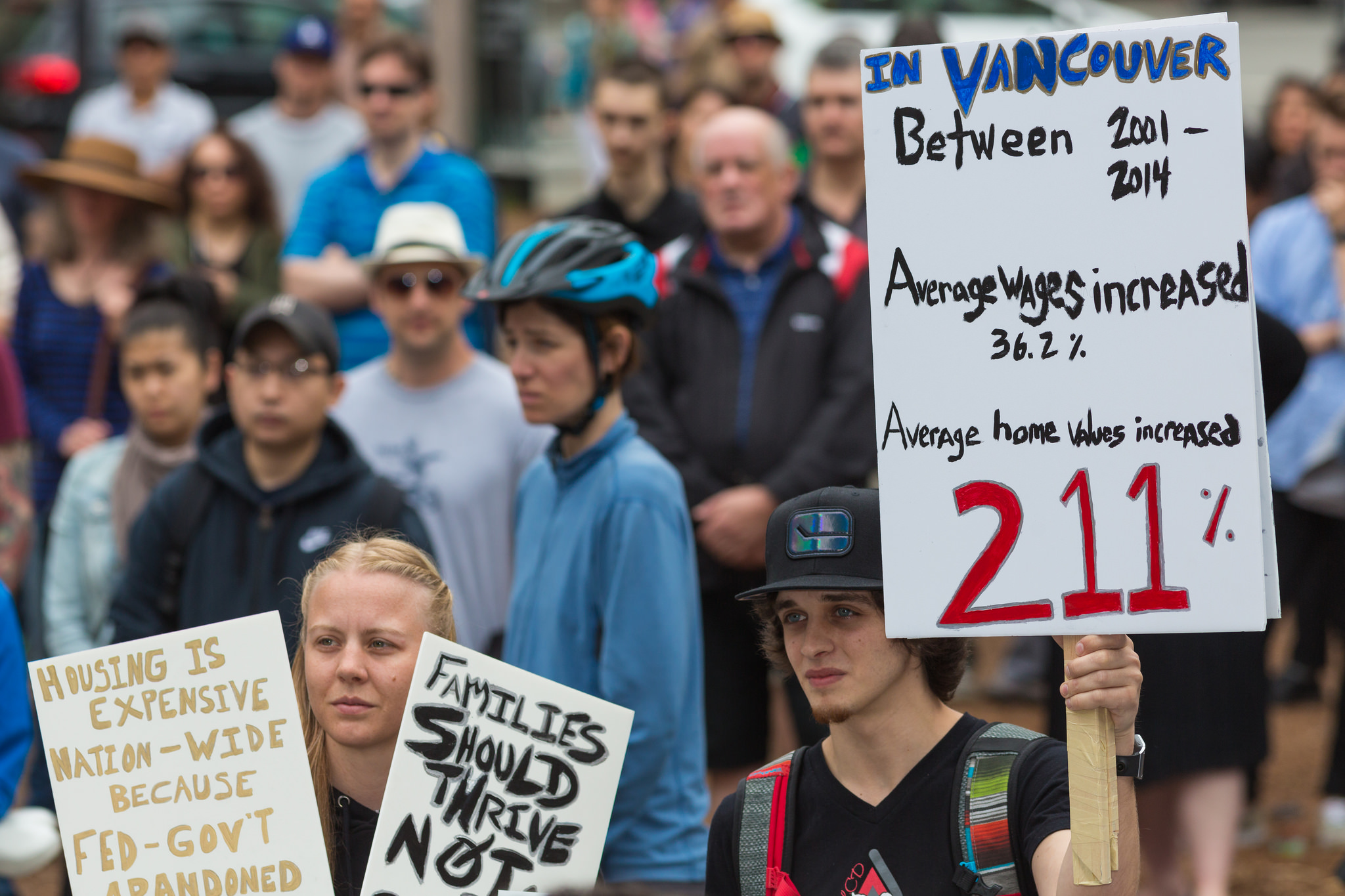Many renters and low-income families can’t keep up with the rise in rental prices and are being forced to explore more affordable options. Canada’s increasing housing prices are the reason that the wait-list for affordable housing is extremely long, with wait times up reaching up to 10 years.
As a response to this crisis, Canada’s latest fedral budget seeks a remedy this problem. The new budget has allocated a total of $11.2 billion over 10 years towards affordable housing. Much of it will go towards refurbishing existing social housing. Leftover funds will build new housing, which seeks to aid low-income families and those affected with homelessness. The budget will extend funding to the Homelessness Partnering Strategy, allocating an additional $2.1 billion to fund community programs that help fight homelessness, especially within Indigenous communities.
However, pumping money into programs that only fight against existing homelessness may be more of a damage control strategy rather than a solution to the housing bubble. Average Canadian incomes are not able to keep up with rising prices of rent and down payment on homes. From 1985 to 2015 house prices have shot up by 419%, whereas household income has only risen by 133%. In a previous article I wrote, I explain how unaffordable housing across Canada really is, especially in Vancouver and Toronto.
Vancouver was deemed with the third most unaffordable housing in the world out of 406 cities according to the 2017 Demographia International Housing Affordability Survey. It followed behind Sydney and Hong Kong. Toronto was ranked as the 13th city with the most unaffordable housing. The population of the Greater Vancouver Area and the Greater Toronto Area is around 8.9 million, which is 24% of Canada’s total population. Each of these cities is a hub for Canadian jobs; however, they are also hubs for high priced homes.
Canadians, especially millennials and young professionals who are more likely to seek to rent homes may have to turn to affordable housing due to astronomical home prices. Over 40% of Canadians pay 30% or more of their income towards shelter costs. In 2015, over 140,000 families across Canada were on the waiting list for affordable housing, with 90,000 waiting for homes in Toronto. In Vancouver, the income limit to be eligible for a subsidized bachelor apartment is $38,500. According to an article in VanMag, “the median income for 25 to 34 year old degree holders in Vancouver is $36,484 compared to $41,419 nationally”. Over 25% of renters in both Vancouver and Toronto earn less than $20,000 a year. It seems that the waiting list will continue to grow unless the gap between incomes and house prices narrows in the near future.
Not only the younger part of the population is affected by high prices. As the population gets older, more people unable to work and have dwindling savings due to the recession in 2008. Out of Canadians aged 55-64, 47% are not enrolled in an employer pension program. The need for affordable housing increases as the aging population reaches an age where work is no longer physically possible. Over 30% of Toronto’s wait list for affordable housing are seniors, a number that continues to grow, as more than 70% of workers over 60 years old say they can’t afford to retire yet.
The budget includes an investment of $5 billion in the newly created National Housing Fund over the span of the next 11 years. The National Housing Fund is intended to support poverty-susceptible populations such as the mentally ill and disabled, seniors, indigenous peoples, veterans, and abuse victims. The budget also dedicates $300 million of the funding to Northern provinces including the Yukon, Northwest Territories, and Nunavut to help cover higher building costs due to building in the north.
The budget includes $225 million over the next 11 years for Indigenous peoples living off the reserves. However for those living on the reserves, $3.4 billion will be put to affordable housing and community facilities that may help the sub-par living conditions that many reserve residences face. On many Indigenous reserves, overcrowding and deteriorating housing is a great issue. In Manitoban reserves alone, there was a shortage of 17,000 homes according to the Assembly of Manitoba Chiefs in 2011.
The $3.4 billion for infrastructure on reserves is spread across 5 years and though it is a large number, it will likely not be enough to make a noticeable difference in many reserves. In Manitoba alone it is estimated that $2 billion will be needed to fix mould and overcrowding problems on reserves. This doesn’t even touch on the two thirds of reserves that have unsafe drinking water in Canada.
The federal government is also providing easier access to Canada Mortgage and Housing Corporation’s preferred lending rate for municipalities and non-profit organizations, as well as access to banked capital set aside for affordable housing and shelter projects. The federal government is planning to help fund municipal projects, with 40% of infrastructure projects covered and 75% for Indigenous projects. Easier access to low-cost loans as well as opening up federal lands for municipalities to build affordable housing will get more people on the waiting list for homes into affordable homes, however the list may keep growing if housing prices keep rising and incomes stay stagnant.
Photo: “Affordable Housing Protest Rally” (May 24, 2015), by Mark Klotz via Flickr. Licensed under CC BY 2.0.
Disclaimer: Any views or opinions expressed in articles are solely those of the authors and do not necessarily represent the views of the NATO Association of Canada.




